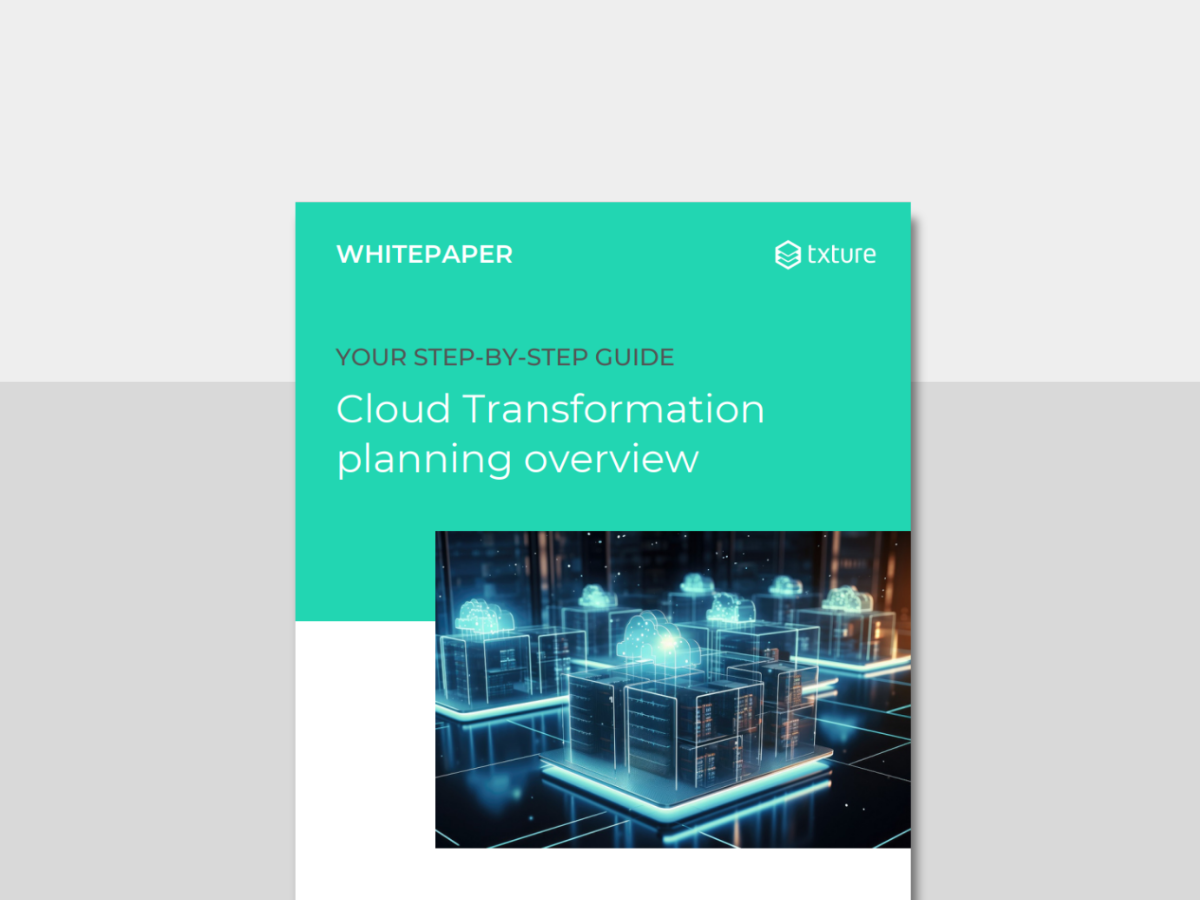Cloud-native foundations and how to build future-ready applications

Cloud-native can be translated to “built for the cloud”. It is a software design approach consisting of a set of fundamental principles and technologies that allow for optimal performance in cloud-based environments. So, instead of just designing applications, we nowadays need to design them in a cloud-native manner. What that means and what to keep in mind when designing cloud-natively, you’ll learn in this article.
What are “Cloud-Native” Foundations?
Everything today is about being agile, scalable, flexible, and cloud-based. If we want our technology to leverage the cloud’s full potential, we have to design it in a way that works well with the cloud’s capabilities. Cloud-native foundations represent a modern approach embracing the full potential of cloud computing to build, deploy, and manage applications. Read on to understand the core concepts and advantages of cloud-native foundations.
💡 A definition of cloud-native foundations: Cloud-native foundations are the fundamental principles, tools, and practices used to design, build, and run applications that are optimized for cloud environments, enabling efficient utilization of cloud resources.
Key Principles of Cloud-Native Foundations
So let’s start by looking at the fundamental principles of cloud-native software design:
- Modularity and Microservices: Instead of designing complex integrated structures, applications are broken down into smaller, loosely coupled services that can be developed, deployed, and scaled independently.
- Containerization: Packaging applications and their dependencies (e.g. code, libraries, or configurations) into isolated containers ensures consistency and portability across different environments.
- Dynamic Orchestration: Automated management and scaling of containers, exemplified by Kubernetes, optimize resource utilization and responsiveness.
- Continuous Integration and Deployment: Embracing CI/CD pipelines streamlines development and accelerates the release cycle.
For a more in-depth explanation of the single components of cloud-native ecosystems, jump to the next section!
Cloud-Native Components
Microservices Architecture
Cloud-native’s backbone. Microservices (as opposed to "monolithic architecture”, which is one single large unit) break down applications into smaller, independent services focusing on specific tasks or functions. They are the architectural foundation of cloud-native applications:
- Loose Coupling: Small, independent services communicate through APIs, allowing changes in one service without affecting others.
- Scalability: Individual services can be scaled as needed, optimizing resource utilization without needlessly oversizing other components.
- Resilience: Failures are contained within single services, preventing widespread outages.
Containerization
 Containerization ensures that applications can consistently function the same way, even if deployed in a different environment.
Containerization ensures that applications can consistently function the same way, even if deployed in a different environment.
Empowering portability and consistency. Containers “bundle” applications with all they need (code, executables, runtime, system libraries, settings, files, and anything else essential for the application to function correctly). This way, the application can function consistently on a wide variety of different machine setups.
- Isolation and Portability: Containers encapsulate applications and dependencies, ensuring consistency across different environments.
- Efficient Resource Utilization: Containers share the host OS kernel, reducing overhead.
Orchestration and Management with Kubernetes
The open-source container orchestration platform Kubernetes is one of the main pillars of cloud-native ecosystems. It automates and coordinates the service and component management:
- Automated Deployment: Kubernetes automates the deployment, scaling, and management of containerized applications.
- Self-Healing: In a cloud-native setup, when containers fail, they are automatically replaced, guaranteeing the application's availability at all times.
- Horizontal Scaling: Applications can scale horizontally by adding or removing containers.
 Kubernetes automates application deployment, ensures self-healing by replacing failed containers, and facilitates horizontal scaling for cloud-native environments.
Kubernetes automates application deployment, ensures self-healing by replacing failed containers, and facilitates horizontal scaling for cloud-native environments.
CI/CD Pipelines
Continuous Integration and Continuous Deployment (CI/CD) pipelines simplify development and deployment by automating testing and release processes. This ensures consistent, bug-free releases, and minimizes manual tasks to reduce the risk of human errors.
Challenges and Considerations in Cloud-Native Adoption
Change is never easy, especially when traditional ways of working need to be reinvented completely. For companies to start adopting cloud-native development comes with challenges:
- Complexity (managing a distributed ecosystem requires specialized skills)
- Cultural shift (new DevOps culture must be embraced to fully exploit cloud-native benefits)
- Operational challenges (managing numerous microservices and containers)
- Integration and interoperability (it can be difficult to integrate cloud-native technologies with existing systems or third-party services; many dependencies between services pose a challenge)
- Security risks (at first, new environments can always mean new security risks and vulnerabilities) Other issues can be resource management, cost control, and adequate training of the workforce.
If you want to learn more about managing change within your organization, check out our whitepaper “Leading Change in the Context of a Cloud Transformation”.
 Proper change management when first adopting cloud-native processes is key to their successful implementation.
Proper change management when first adopting cloud-native processes is key to their successful implementation.
Real-World Examples of Cloud-Native Success
Many of the big digital players heavily rely on cloud services to offer their service portfolio to users all over the world. Below, we’ll list a few examples, each with their main cloud nativity benefit and a short explanation of how cloud computing supports their business.
| Company | ✅ Cloud Benefit | ❓ What they did |
|---|---|---|
| Netflix | Enhanced Scalability | Cloud-native architecture allows Netflix to rapidly scale its services to meet high demand on rainy Sundays, during popular shows or events, providing a seamless streaming experience for users. |
| Airbnb | High Availability | Leveraging cloud-native practices, Airbnb ensures high availability of their platform, allowing hosts and guests to access and book accommodations reliably at any time. |
| Spotify | Rapid Innovation and Deployment | Spotify's cloud-native approach with microservices enables them to innovate and deploy new features quickly, staying ahead in the competitive music streaming market. |
| Uber | Real-Time Responsiveness | Through cloud-native technologies, Uber achieves real-time responsiveness in ride requests and driver dispatch, ensuring a smooth experience for both riders and drivers with minimal loading times. |
Becoming Cloud-Native
❌ Cloud computing is no longer “the future”, but already defines the present. Therefore, embracing cloud-native foundations has become a strategic imperative. If your business strives for agility, scalability, and efficiency, it’s key to design your applications based on cloud-native principles: modularity, containerization, dynamic orchestration, and continuous integration. This way, you’ll build future-ready applications!
Learn more on cloud transformations
-
What are the benefits of cloud computing? Read this article on the 5 key advantages of using the cloud.
-
Seems a bit much? Download our step-by-step cloud transformation guide for a breakdown of the migration process into simple, understandable steps.

Simple Step-by-step Guide: Cloud Transformation Planning
Or reach out to our sales experts to discuss your current situation and ways our software can support you moving forward:
Related posts
29.4.2025Application ModernizationDefine your scope for IT modernization2.3.2025
Cloud StrategySelecting the right cloud data center for hosting your workloads27.6.2024
Cloud optimizationA great driver to maximize cloud value: moving to instances with modern processors 24.5.2024
Cloud Knowledge5 best practices to manage change during a cloud transformation5.4.2024
Generative AIHow to welcome Generative AI into your existing tech ecosystem
